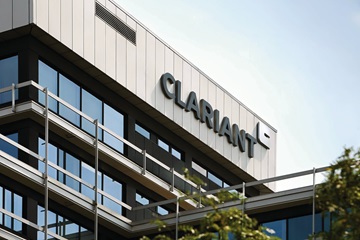Interview article by Joseph Chang
NEW YORK (ICIS)–Switzerland-based specialty chemicals company Clariant is developing “optimised, improved versions” of catalysts to produce olefins, methanol and ammonia, the head of its catalysts research and development department said.
 “There are several programs on the way to develop new solutions based on feedstock availability,” said Marvin Estenfelder, head of R&D at Clariant’s catalysts business unit.
“There are several programs on the way to develop new solutions based on feedstock availability,” said Marvin Estenfelder, head of R&D at Clariant’s catalysts business unit.
These feedstocks range from natural gas liquids (NGLs) to coal to biomass, he added.
Among the programs Clariant has commercialised is a next generation catalyst for methanol-to-propylene (MTP). Its current zeolite-based catalyst has been around for more than 10 years.
The company also produces catalysts for propane dehydrogenation (PDH), another route for on-purpose propylene that has gained in popularity in the past several years.
In 2011, Clariant announced selectivity improvements of up to 2% in its Catofin line of catalysts which are used in the PDH process, as well as to produce isobutylenes.
In February 2017, Clariant announced it had been awarded a contract by China-based Dongguan Grand Resource Science & Technology to develop a new PDH unit in Dongguan City, China in cooperation with US-based engineering firm CB&I which has worldwide licensing rights for the Catofin technology.
The plant will be based on Catofin catalytic dehydrogenation technology, which uses Clariant’s Catofin catalyst, and its Heat Generating Material (HGM) which boosts olefin selectivity and yield by several percent, reduces energy consumption and reduces emissions, according to Clariant.
Propylene capacity of the PDH unit will be 600,000 tonnes/year, according to CB&I.
Clariant also offers catalysts for coal-to-olefins (CTO) production, a process used in China to convert its stranded coal assets into higher value chemicals and plastics. However, the pace of China CTO projects have slowed markedly on a greater focus on the environment and emissions in particular.
“The basic technology is there and proven. It’s a matter of constant optimisation. Over time, the plants will become more efficient and less polluting,” said Estenfelder.
“Catalysts can help address the root cause, providing more effective processes to avoid offgases and the burning of raw material. After the plant is live, they can also reduce the environmental impact by treating the offgases,” he added.
Clariant’s catalyst business is highly R&D driven, with the segment’s R&D spending/sales percentage more than double the 3.5% for the company overall, he said.
In 2016, Clariant’s Catalysis business area generated sales of Swiss francs (Swfr) 673m out of total sales of Swfr 5.85bn.
“A good part of the innovation process is to develop new generations of optimised catalysts,” he added.
Another potential area of growth for the catalysts business is tapping into adjacent markets with its hydrogenation and oxidation catalysts for the production of intermediates and specialty chemicals, noted Estenfelder.
Plus, he sees demand for its custom catalysts business where Clariant helps customers develop catalysts, with customers then using Clariant’s production capabilities.
